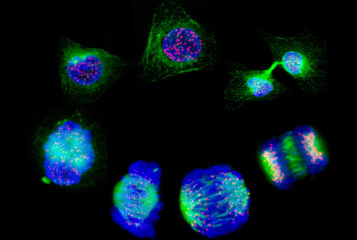Scientific American in partnership with Cellectis, hosted a virtual event to explore genome editing and its use in the clinic. Three pioneers of the field were invited to discuss the early days of genome editing, new technologies and future challenges.
I had high expectations going into this event, so I was really glad that it didn't disappoint. The discussions were lively, the panelists were enthusiastic and there were plenty of thought-provoking moments. Overall, it turned out to be a welcome escape from lockdown fatigue.
After a brief introduction, Dr Dan Ferber, senior editor at Nature Research Custom Media, opened the discussion by asking: what were the key scientific breakthroughs and turning points? When did we realise genome editing might make a difference in the clinic?
George Church, professor of genetics at Harvard Medical School and professor of health sciences and technology at Harvard and the Massachusetts Institute of Technology (MIT), and considered to be the father of genome engineering, gave a brief history of the technology. It was interesting to hear him reflect on his work as a PhD student in the 1970s and outline the challenges faced by researchers then and now.
Dr André Choulika, CEO of Cellectis, followed this up with an animated account of what it was like to be a protein engineer 20 years ago. He described the struggles they faced as they tried to alter proteins, known as nucleases, to recognise and edit naturally occurring genes. He spoke passionately about his research and the discovery of TALENs that eventually brought him to the conclusion that 'nuclease-based genome editing could become a therapeutic approach.'
Unsurprisingly the conversation then turned to CRISPR/Cas9. Dr Choulika recalled how he first found out about the technology in 2012 and how it revolutionised the field. He said it 'totally invaded earth,' it rapidly went 'viral.' The technology was so accessible that anyone could become a gene editor, you didn't need to be an expert in protein engineering, and that's why it won the Noble prize.
The audience were then given an insight into how genome editing could be used to treat blood and immune diseases. One of the pioneers of cell-based CRISPR therapies, Matthew Porteus, professor and physician at Stanford University, spoke profoundly about the inadequacy of current treatments and the promise of stem cell technology and genome editing. He also highlighted some of the safety concerns and importance of considering treatment in the context of what's happening naturally – how do we deal with the fact that our genomes are changing every time our cells divide? It seems obvious, but it's not something I'd previously given much thought.
Dr Choulika followed up with an overview of CAR-T therapies developed by Cellectis. In simple terms, the technology involves engineering T-cells to find and destroy cancer cells. This was the only moment when the discussion got a bit too technical and the sound quality made it difficult to follow.
Fortunately, Dr Choulika held the audience's attention by giving a real-world account of how the therapy saved a young girl from life-threatening leukaemia. He described the success simply as 'the first example of gene edited T-cells in a patient.' Professor Porteus was more enthusiastic, adding, 'the fact she's alive five years later is remarkable.'
Considering the glowing review, I was surprised to hear that only 60-70 patients are currently receiving this treatment. Unfortunately, it wasn't discussed further, but I guess it's because the technology – which uses TALENs – is known to be less flexible and more technically demanding.
The final topic for discussion was ethics. Professor Church raised a valid point, saying that right now there's more demand for somatic genome editing and no compelling reason to use germline editing. He also rightly pointed out that trials would take too long, especially for late onset diseases. Professor Porteus concluded that the availability of somatic genome editing, alongside IVF and preimplantation screening, would greatly reduce the need for germline genome editing.
Professor Porteus closed the discussion poignantly, saying that germline editing is an intentional change that has the potential to affect the whole of humanity. He said the decision to 'cross that line' is not one that can be made by scientist alone, it needs buy-in from all of humanity.
The event ended with a brief Q&A. The topics covered included: what are the likely targets and treatment in the next five years? What technology can we expect beyond CRISPR and how might genome editing be used to treat HIV and childhood diseases?
Despite a few technical issues, I thought the format worked well. I particularly liked the fact that very few slides were used so it felt more like a conversation. I also thought the speakers did a great job of keeping the energy up throughout, which is not always easy with a virtual event.





Leave a Reply
You must be logged in to post a comment.